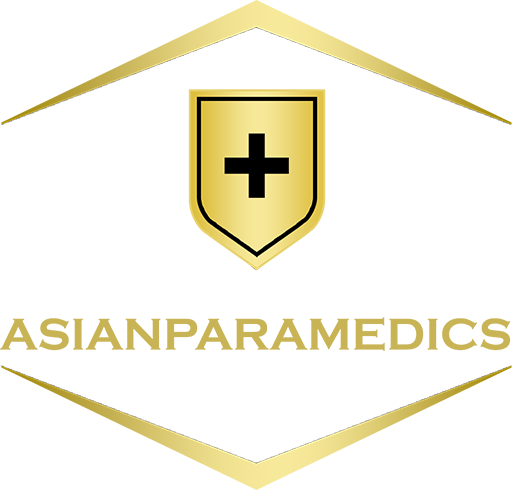MYELOPOIESIS / GRANULOPOIESIS AND ITS REGULATION
Definition: Myelopoiesis is the process of proliferation, differentiation and maturation of granulocytes in the bone marrow.
• Granulocytes arise from pluripotent hematopoietic stem cells.
• PHSC differentiate into granulocyte-monocyte colony forming unit (GM-CFU). This further differentiated into granulocyte colony forming unit (G-CFU).
• G-CFU pass through successive divisions and stages and ultimately form mature granulocytes.
. Proliferation and maturation of myeloid series in the bone marrow demonstrates a continuum of development from myeloblast to the most mature granulocytes.
• Each granulocytes follow the same pattern of development i.e. myeloblast, promyelocyte, myelocyte, metamyelocyte, band cell and mature granulocytes.
• Each granulocyte can be distinguished at myelocyte stage due to the appearance of specific granules.
.During maturation, there is reduction in nucleus volume, condensation of chromatin, change in nuclear shape, appearance and disappearance of primary granules, appearance of secondary granules, color changes and change in size of the cell.
• Myeloblast, promyelocyte and myelocyte; these cells undergo mitosis and have the capability of division.
• Metamyelocytes and band cells are the components of maturation pool. These cells do not divide.
• Segmented neutrophils stored in the bone marrow and are released in the circulation.
• After few hours neutrophils marginate along with the vessel wall and is termed as marginating pool. These cells leave the circulation and enter the tissues passing through the endothelial cells by a process known as diapedesis.
STAGES OF GRANULOPOIESIS
• Morphologically Granulopoiesis is divided into 6 stages
1. Myeloblast
2. Promyelocyte
3. Myelocyte
4. Metamyelocyte
5. Band cells / stab cell
6. Mature granulocytes (Neutrophils, eosinophils, basophils)
1. Myeloblast (0.2-1.5%)
Size: Large (14-20 um), Shape: Round to oval, N:C: High (4:1)
Cytoplasm:
Color: Light blue
Amount: Scanty
Granule: Primary granules present
Granule color: Reddish Purple
Nucleus:
Color: Radish purple
Shape: Round to oval
Chromatin Pattern: Open
Nucleolus: 2-4 present

2. Promyelocyte (2-4)
Size: Large (15-21 um), Shape: Round to oval, N:C: High
Cytoplasm:
Color: Basophilic
Amount: Moderate
Granule: Primary granules present
Granule color: Reddish Purple
Nucleus:
Color: Radish purple
Shape: Round to oval
Chromatin Pattern: Coarse
Nucleolus: May be present

3. Myelocyte (8-16)
Size: Large (12-18 um), Shape: Round to oval, N:C: (50:50)
Cytoplasm:
Color: Light Blue
Amount: abundant
Granule: Primary + appearance of secondary granules
Granule color: Pink
Nucleus:
Color: Radish purple
Shape: Round to oval
Chromatin Pattern: Coarse
Nucleolus: Absent

4. Metamyelocyte (9-25)
Size: Large (10-18 um), Shape: Round to oval, N:C: (decrease)
Cytoplasm:
Color: Pinkish
Amount: abundant
Granule: Primary+secondary granules
Granule color: Pinkish
Nucleus:
Color: Dark purple
Shape: Kidney/horse-shoe shaped
Chromatin Pattern: Condensed
Nucleolus: Absent

5. Band Cell (9-15)
Size: Large (10-18 um), Shape: Round to oval, N:C: (decrease)
Cytoplasm:
Color: Pinkish
Amount: abundant
Granule: Primary + secondary granules
Granule color: Pinkish
Nucleus:
Color: Dark purple
Shape: Horse-shoe shaped
Chromatin Pattern: Condensed
Nucleolus: Absent

6. Segmented Neutrophil
Size: Large (10-18 um), Shape: Round to oval, N:C: (decrease)
Cytoplasm:
Color: Pink
Amount: Bbundant
Granule: Primary + secondary granules
Granule color: Pinkish
Nucleus:
Color: Dark purple
Shape: Segmented/multi lobes (2-5)
Chromatin Pattern: Condensed
Nucleolus: Absent

Regulation of Granulopoiesis
• Growth factors essential for the proliferation, growth, development and maturation of granulocytes include granulocyte-monocyte colony stimulating factor (GMCSF), granulocyte colony stimulating factor (G-CSF), interleukin-6 (IL-6), IL-11, IL-1, IL-3 and IL-5.
• Increased granulocyte and monocyte production in response to an infection is induced by increased production of growth factors from stromal cells and T lymphocytes, stimulated by endotoxin, and cytokines such as IL‐1 or tumor necrosis factor (TNF)


CLINICAL APPLICATION OF G-CSF
• G‐CSF is used as a therapeutically and administrated intravenous or subcutaneous that increased neutrophils count. Short‐acting G‐CSF is given daily. A longer‐acting G‐CSF can be given once in 7–14 days.
• Indications:
• Post‐chemotherapy/radiotherapy
• Stem cell transplantation,
• Myelodysplasia
• Aplastic anemia,
• Severe benign neutropenia,
• Peripheral blood stem cell mobilisation


